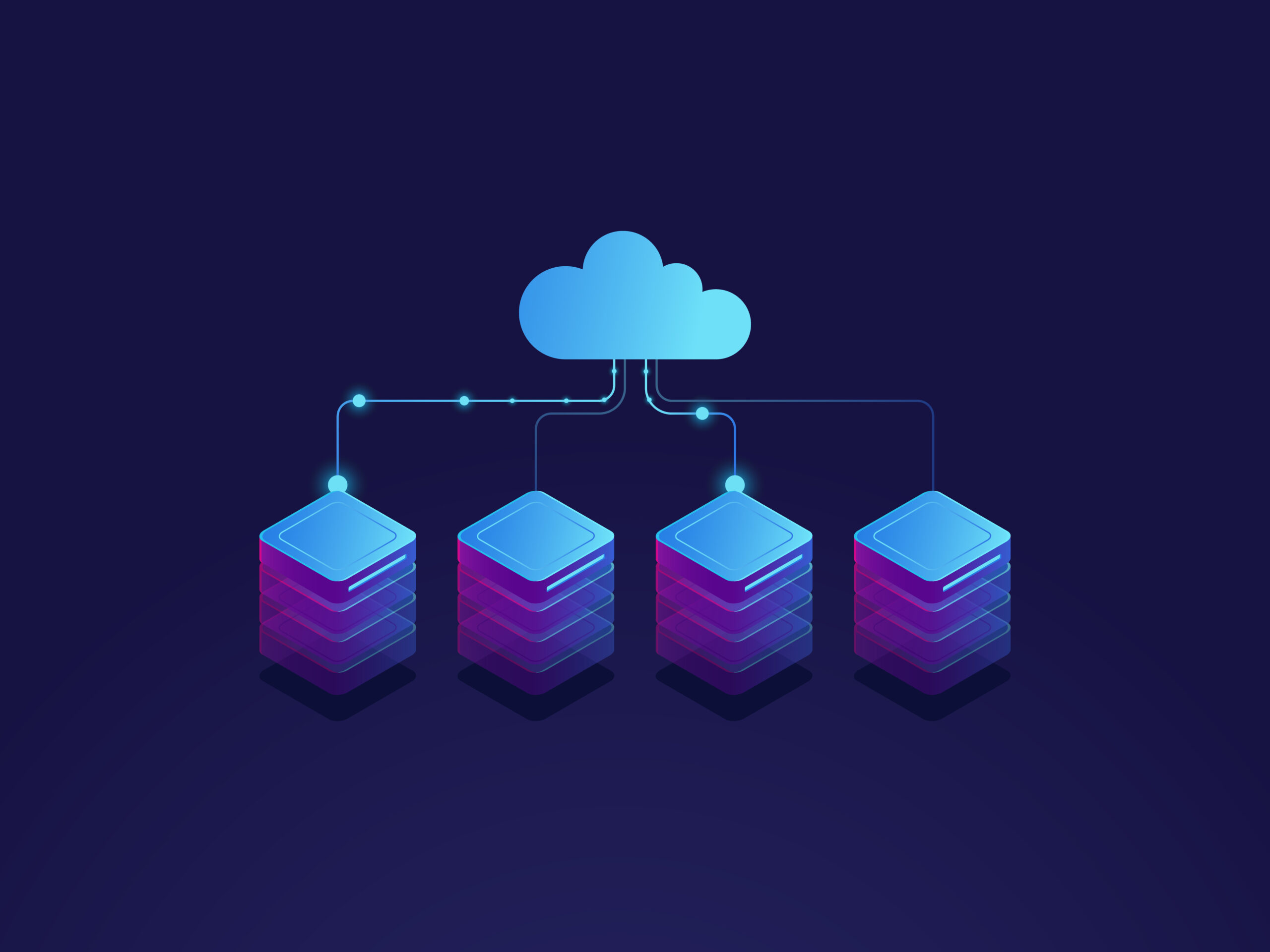
August 22, 2025
A Beginner's Guide to Mastering the AWS SAM (Serverless Application Model)
Look, I get it. You've been living comfortably in the world of EC2 instances and containers, spinning up servers like it's 1999. But then someone at your company mentioned "going serverless," and suddenly you're drowning in acronyms: SAM, CDK, CloudFormation, Lambda, API Gateway.
Here's the thing—AWS SAM isn't just another tool you need to learn. It's your gateway drug to serverless computing that actually makes sense. And by the end of this guide, you'll understand exactly why thousands of developers are making the switch.
What AWS SAM Actually Is (And How It Differs from CDK/CloudFormation)
AWS SAM (Serverless Application Model) is essentially CloudFormation's cool younger sibling who went to college and came back with better ideas. AWS SAM is template-based using JSON or YAML, while the AWS CDK uses languages such as Python or Node.
- CloudFormation: everything is possible, little is pleasant. You write every wire and screw.
- AWS CDK: you write infrastructure in real languages (TypeScript/Python/Java), then synthesize to CloudFormation—awesome for complex, mixed stacks.
- AWS SAM: a serverless-focused shorthand over CloudFormation with smart conventions (functions, APIs, tables, events). Ideal for the 80% of serverless builds.
When to use each:
- SAM: Building serverless applications (APIs, event processors, scheduled tasks)
- CDK: Complex infrastructure mixing serverless and traditional resources
- CloudFormation: When you enjoy pain and have unlimited time
Core Concepts: Templates, Policies, and the SAM Workflow
SAM revolves around three main concepts that’ll become your best friends:
Templates: Both CloudFormation and SAM use YAML templates—it’s the same format under the hood. The difference is how much you have to write. CloudFormation makes you spell out every last detail (think 50–100 lines just to wire up a Lambda). SAM, on the other hand, gives you shortcuts: higher-level resource types like AWS::Serverless::Function that expand into the full CloudFormation behind the scenes. Same YAML, but fewer tears.
Implicit policies: This is where SAM really shines. Instead of writing IAM policies by hand (and inevitably leaving something too wide or too restrictive), SAM auto-generates the minimum permissions your functions need. Define a DynamoDB table and connect it to a Lambda? SAM gives that function read/write rights automatically. Less guesswork, more security.
The SAM CLI workflow: Three commands rule your world:
- sam build — packages your code and dependencies
- sam local start-api — spins up your API locally for testing
- sam deploy — ships your app to AWS
It’s like having a personal assistant who handles the grunt work, while you focus on the code that actually moves your business forward.
Your First SAM App: API Gateway + Lambda + DynamoDB (Hello, Real World)
Forget "Hello World", Let’s build a tiny tasks API. You’ll get the serverless trio: API Gateway (HTTP), Lambda (logic), DynamoDB (storage), with the right IAM policy and CORS done the SAM way.
AWSTemplateFormatVersion: '2010-09-09'
Transform: AWS::Serverless-2016-10-31
Resources:
ApiGatewayApi:
Type: AWS::Serverless::Api
Properties:
StageName: Prod
Cors:
AllowOrigins: "'*'"
AllowMethods: "'GET,POST,OPTIONS'"
TasksTable:
Type: AWS::Serverless::SimpleTable
Properties:
PrimaryKey:
Name: id
Type: String
Option A — One Lambda, two routes (simple dispatcher)
Refactor to one handler that routes on method/path. This cuts deploy/package time and keeps your infra tiny.
SAM (single function, two API events)
Resources:
ApiGatewayApi:
Type: AWS::Serverless::Api
Properties:
StageName: prod
TasksTable:
Type: AWS::Serverless::SimpleTable
Properties:
PrimaryKey:
Name: id
Type: String
SSESpecification:
SSEEnabled: true
TasksFunction:
Type: AWS::Serverless::Function
Properties:
CodeUri: src/
Handler: app.tasks_handler # single entry point
Runtime: python3.12
Timeout: 10
Environment:
Variables:
TABLE_NAME: !Ref TasksTable
Policies:
- DynamoDBCrudPolicy:
TableName: !Ref TasksTable
Events:
GetTasks:
Type: Api
Properties:
RestApiId: !Ref ApiGatewayApi
Path: /tasks
Method: get
CreateTask:
Type: Api
Properties:
RestApiId: !Ref ApiGatewayApi
Path: /tasks
Method: post
src/app.py (dispatch by method)
import os, json, uuid, datetime
import boto3
TABLE = boto3.resource("dynamodb").Table(os.environ["TABLE_NAME"])
def tasks_handler(event, context):
method = (event.get("httpMethod") or event.get("requestContext", {}).get("http", {}).get("method", "")).upper()
path = event.get("path") or event.get("rawPath", "")
if path == "/tasks" and method == "GET":
return get_tasks()
if path == "/tasks" and method == "POST":
body = event.get("body")
try:
payload = json.loads(body or "{}")
except json.JSONDecodeError:
return _resp(400, {"error": "Invalid JSON"})
return create_task(payload)
return _resp(404, {"error": "Not found"})
def get_tasks():
# basic scan; in prod use PK queries/pagination
data = TABLE.scan().get("Items", [])
return _resp(200, {"tasks": data})
def create_task(payload):
item = {
"id": payload.get("id") or str(uuid.uuid4()),
"title": payload.get("title", "").strip(),
"created_at": datetime.datetime.utcnow().isoformat()
}
if not item["title"]:
return _resp(422, {"error": "title is required"})
TABLE.put_item(Item=item)
return _resp(201, item)
def _resp(status, body):
return {"statusCode": status, "headers": {"Content-Type": "application/json"}, "body": json.dumps(body)}
Pros: one package to build, fewer cold starts, simpler routing.
Trade-off: the function needs CRUD permissions for the whole /tasks surface; if you wanted strict least-privilege per method, see Option B.
Option B — Keep two Lambdas, remove duplication (DRY it up)
If you want separate handlers (e.g., tighter IAM or independent scaling), keep two functions but pull common bits into Globals so you’re not repeating yourself.
Globals:
Function:
CodeUri: src/
Runtime: python3.12
Timeout: 10
Environment:
Variables:
TABLE_NAME: !Ref TasksTable
Policies:
- DynamoDBCrudPolicy:
TableName: !Ref TasksTable
Resources:
ApiGatewayApi:
Type: AWS::Serverless::Api
Properties:
StageName: prod
TasksTable:
Type: AWS::Serverless::SimpleTable
Properties:
PrimaryKey:
Name: id
Type: String
SSESpecification:
SSEEnabled: true
GetTasksFunction:
Type: AWS::Serverless::Function
Properties:
Handler: app.get_tasks
Events:
GetTasks:
Type: Api
Properties:
RestApiId: !Ref ApiGatewayApi
Path: /tasks
Method: get
CreateTaskFunction:
Type: AWS::Serverless::Function
Properties:
Handler: app.create_task
Events:
CreateTask:
Type: Api
Properties:
RestApiId: !Ref ApiGatewayApi
Path: /tasks
Method: post
Pros: tighter separation of concerns, per-function concurrency limits, and future-proofing if GET/POST diverge.
Trade-off: two packages to build/deploy, slightly more moving parts.
That's it. Seriously. This 25-line template creates a DynamoDB table, a Lambda function, an API Gateway endpoint, and all the IAM roles to connect them. Try doing that with raw CloudFormation, I'll wait.
The beauty is in what SAM handles automatically. It creates the API Gateway integration, sets up CORS if needed, generates the IAM role for your Lambda to access DynamoDB, and even creates CloudWatch log groups. You just write your business logic.
Debugging & Local Emulation with SAM Local
Here's where SAM really flexes. Testing serverless applications used to be a nightmare of deploy-pray-debug cycles. SAM local changes everything.
sam local start-api spins up a local API Gateway simulator. Your Lambda functions run in Docker containers that mirror the AWS Lambda environment. Make a request to localhost:3000/tasks, and you're hitting your actual function code—no deployment required.
Need to debug? SAM supports remote debugging with VS Code and other IDEs. Set breakpoints, inspect variables, and step through code just like any local application. The container approach means you're testing against the same Python version, libraries, and environment variables you'll have in production.
Pro debugging tips:
- Use sam logs -f FunctionName to tail CloudWatch logs in real-time
- Sam local invoke lets you test individual functions with custom payloads
- Mock DynamoDB locally with DynamoDB Local for complete offline development
CI/CD with SAM Pipelines
Once you taste the sweetness of serverless, you'll want proper CI/CD. SAM Pipelines generates complete deployment pipelines for you—no more copying YAML files from Stack Overflow and hoping for the best.
sam pipeline init walks you through creating pipelines for GitHub Actions, AWS CodePipeline, or Jenkins. It generates everything: build steps, testing stages, multiple environment deployments, and rollback strategies.
The generated pipeline handles the heavy lifting: running tests, building artifacts, deploying to staging, running integration tests, and promoting to production. It even includes security scanning and dependency checks because production is no place for surprises.
Cost, Cold Starts, and When Not to Use Serverless
Let's talk money because someone has to. If your application is purely serverless and you want to deploy AWS Lambda functions, API Gateway, DynamoDB, and related services, AWS SAM is perfect. But "serverless" doesn't mean "free-less."
The honest pricing picture (varies by region and API type):
- Lambda: approximately $0.20 per million requests + compute time (GBseconds). Example: 100k requests, 256MB, 100ms → roughly $0.06 for Lambda (requests + compute).
- API Gateway HTTP API: about $1.00 per million requests → $0.10 for 100k. (REST API is pricier.)
- DynamoDB: storage approximately $0.25/GBmo; on-demand R/W billed per request (or provisioned capacity).
For a light SMB API, allin can be well under a few dollars/month. Data transfer, REST vs HTTP API choice, and workload shape can change that.
Cold starts. A function that has been idle may respond approximately 100–500ms slower on the first hit. For latency-sensitive endpoints, turn on Provisioned Concurrency to maintain steady hot capacity.
Skip serverless if you:
- need long-lived, persistent connections you can’t model via API Gateway WebSockets or EventBridge;
- run jobs over 15 minutes;
- have extremely high, flat traffic where always-on compute is cheaper;
- aren’t ready for the operational shift (infra defined as code, lots of small deployables, event-driven thinking).
Production Checklist: Observability, Retries, DLQs, and IaC Hygiene
Production serverless isn't just bigger dev environments. You need observability, error handling, and proper resource management.
Observability essentials:
1. Enable AWS X-Ray tracing for request flow visibility
2. Set up CloudWatch dashboards for key metrics (errors, duration, concurrency)
3. Configure proper log aggregation—scattered logs across multiple functions are useless
Error handling:
1. Implement retry logic with exponential backoff
2. Set up Dead Letter Queues (DLQs) for failed async invocations
3. Use circuit breakers for external API calls
IaC hygiene:
- Version your SAM templates and store them in git
- Use parameter files for environment-specific values
- Implement proper tagging for cost allocation and resource management
- Regular security reviews of IAM policies (even the auto-generated ones)
The goal isn't perfect architecture from day one—it's operational visibility and the ability to debug issues when they happen (and they will happen).
Next Steps & Templates You Can Steal
You've got the foundation, but learning serverless is like learning to drive—you need practice in real traffic. Here are your next moves:
Immediate actions:
1. Install the SAM CLI and work through the official tutorial
2. Clone AWS's SAM application templates: sam init gives you working examples
3. Build the task management API from this guide—it's on GitHub (search "AWS SAM task API tutorial")
Level up projects:
- Image processing pipeline (S3 + Lambda + Rekognition)
- Real-time chat API (API Gateway WebSockets + Lambda + DynamoDB)
- Scheduled data processing jobs (EventBridge + Lambda + RDS Proxy)
The serverless ecosystem moves fast, but SAM provides stability. AWS SAM Accelerate speeds up local development and cloud testing, and AWS SAM CLI integrations extend AWS SAM to other tools such as the AWS Cloud Development Kit (AWS CDK) and Terraform. You're not just learning a tool—you're investing in a platform that continues evolving.
Start simple, ship early, and iterate based on real usage patterns. Your future self (and your AWS bill) will thank you.
Need help going serverless without surprise bills? Book an assessment.
- Aws
- AWS Cloud
- AWS SAM
- Serverless application model
Want This Done the Smart Way
Want This Done the Smart Way?
Let's Connect
Ready to get started?
We'd love to talk about how we can work together
AWS CLOUDCOST
Take control of your AWS cloud costs that enables you to grow!
